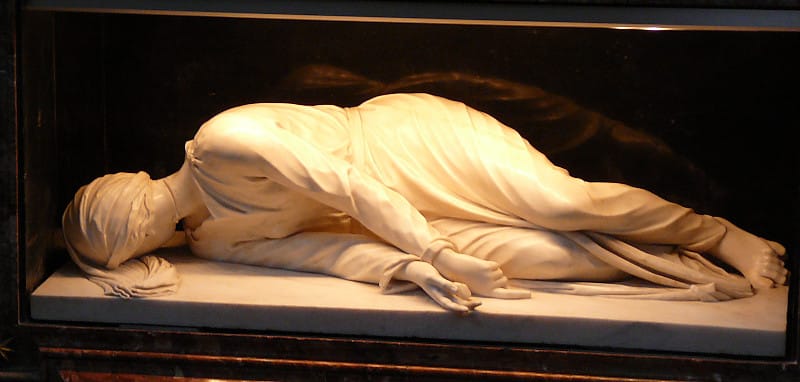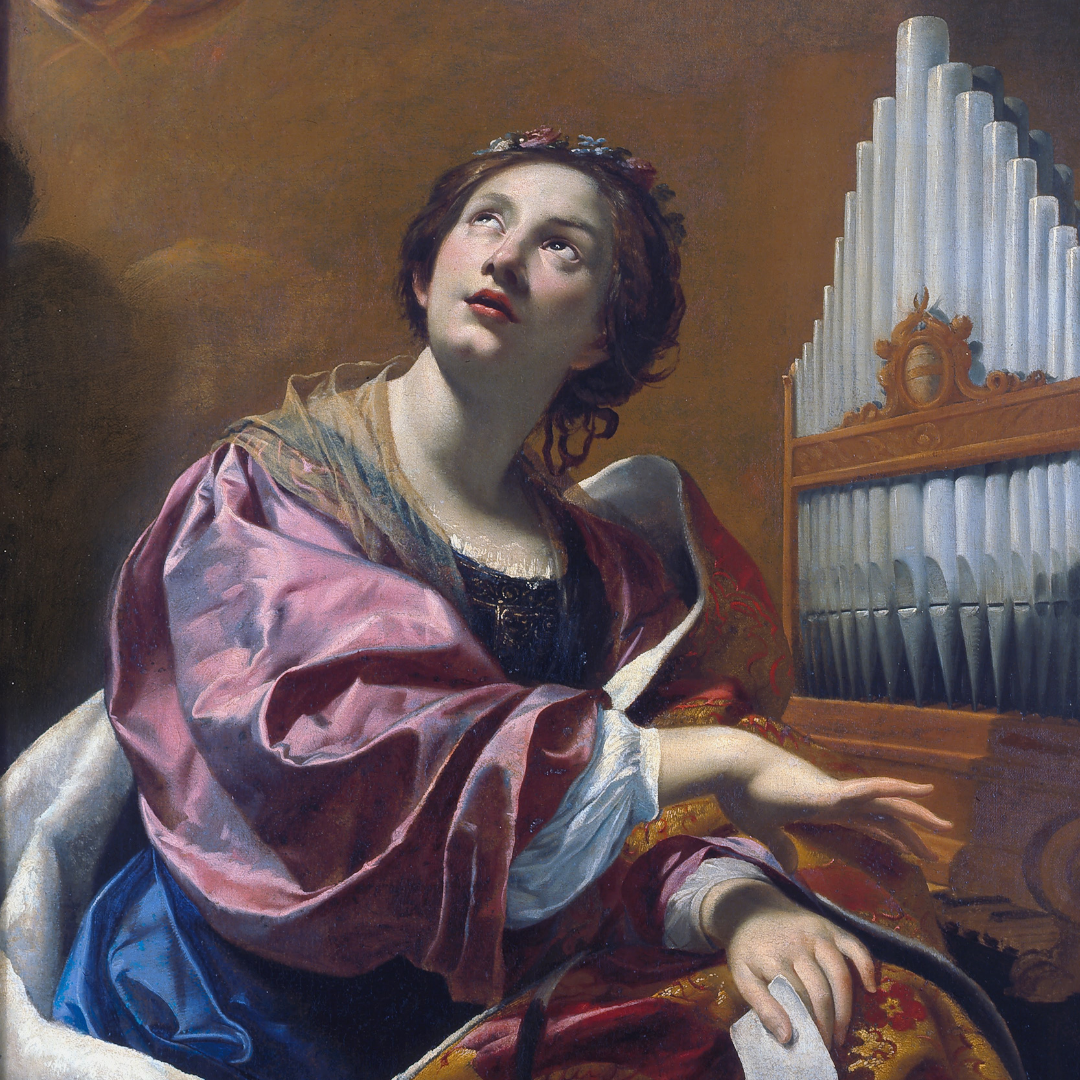As a Catholic musician, there are three songs I want to hear for myself.
Sadly, they are spoken of and not recorded or written. Matthew 26:30 tells us:
"Then, after singing a hymn, they went out to the Mount of Olives."
Jesus, the King of Kings, celebrating in song!
In Luke 2:13-14, we hear the first Gloria from the angels themselves.
While it's not in the Bible, we know Saint Cecilia also sang hymns at her wedding while the musicians sang profane songs. I would love to hear the songs of those closest to God.
Who is Saint Cecilia?
Saint Cecilia was a third-century Roman. She decided early in life to live as a virgin. She promised her virginity to God and an angel protected her from violation. Her parents forced her to marry anyway.
At her wedding, as mentioned above, she sang hymns to God. She eventually convinced her husband to convert.
After his conversion, her husband respected her virginity, and they lived together as brother and sister.
She is credited with giving away much of her family's wealth to the poor and preaching the good news of Jesus Christ.
This drew the Roman officials' attention. Her husband, Saint Valerian, was martyred for respectfully burying the bodies of Christians - a crime at the time.
Roman authorities told her to renounce her faith, but she would not. She was ordered to be suffocated, but she did not suffocate.
As a Roman citizen, she was then to be beheaded.
The executioner took three swings at her - the maximum allowed under Roman law. Her head was not severed. She survived for three days after.
Saint Cecilia is also known as the first incorrupt saint.
Violinist Mat Burkepile plays 'The King of Love' with Saint Cecilia's first-class bone relic at historic painted Texas church. / Click here if you cannot see the video above.
She was laid to rest in the Catacombs of St. Callistus by the future Pope Urban.
In 822 A.D., during the restoration of the church dedicated to her memory, Pope Pascal I wanted to transfer the remains of Saint Cecilia to a place of honor in her cathedral, but could not find her grave.
Saint Cecilia then came to him in a vision while he was in prayer and told him of the location of her body. The relic was found in exactly the place in his vision.
In one of the most witnessed exhumations of any saint’s body, Cardinal Sfondrato ordered the restoration of some of the basilica. On October 20, 1599, two white marble sarcophagi were discovered, which corresponded with the description left by Pascal I of the caskets containing the relics of the holy martyrs.
The cardinal had the sarcophagi opened in the presence of witnesses, raising the lid to view the treasure left in the grave by two Popes. Her body was incorrupt.
Pope Clement VIII was informed but sent Cardinal Baronius to document the event due to gout.
There was a woman of small stature laying on her side with three blows to her neck and in a silk veil and gold embroidered dress stained with blood and her head turned downward.

Saint Cecilia was more than a model of early Christianity. She inspires musicians to live up to the saying attributed to Saint Augustine:
“He who sings prays twice.”


